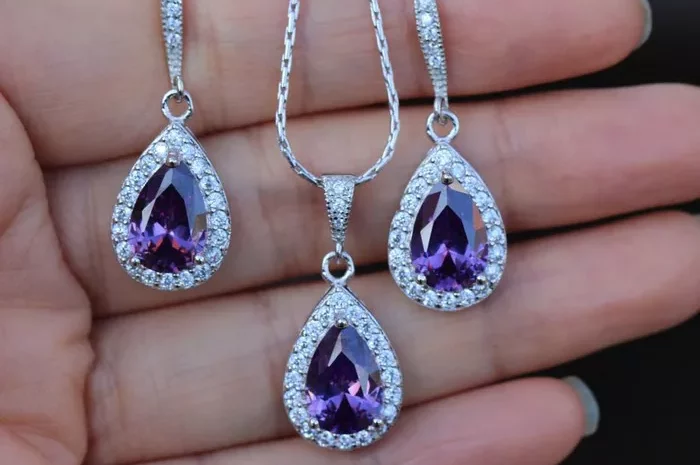Amethyst is a well – known and highly popular purple variety of quartz. It has a long history of being used in jewelry and ornamental objects. Quartz is one of the most common minerals on Earth, which might lead one to assume that amethyst, as a type of quartz, is not particularly rare. However, this is a rather simplistic view.
Geological Occurrence
Amethyst forms in geodes and cavities within rocks. It is often associated with volcanic activity. The formation process of amethyst requires specific geological conditions. It typically forms when silica – rich solutions seep into cavities and slowly crystallize over time. The presence of certain impurities, such as iron, is what gives amethyst its characteristic purple color. While quartz is widespread, the conditions that lead to the formation of high – quality amethyst with a deep, uniform purple color are not as common. For example, in some areas, amethyst may form in large quantities but with a pale or uneven color. In contrast, amethyst deposits that produce stones with a rich, saturated purple color are more limited in number.
Quality and Rarity
Color
The color of amethyst is a crucial factor in determining its rarity. Deep purple amethysts, often referred to as “Siberian purple,” are highly prized and relatively rare. These stones have a color intensity that is not easily found in other deposits. The purple color can range from a light lilac to a deep, almost royal purple. The deeper and more vivid the color, the rarer the amethyst. Stones with a secondary hue, such as a red or blue undertone, can also be quite rare and are highly sought after by collectors.
Clarity
While amethyst is generally not as transparent as some other gemstones like diamond or emerald, high – clarity amethysts are still relatively rare. Clarity refers to the absence of inclusions or internal flaws. Amethysts that are free from visible inclusions and have a relatively clean appearance are more valuable and less common. This is because the formation process of amethyst often results in the inclusion of other minerals or gas bubbles within the crystal structure.
Size
Large amethyst crystals are not as common as smaller ones. When it comes to gem – quality amethyst, finding a large, flawless piece is quite a rarity. Larger amethysts are more difficult to find in nature, and they are also more challenging to cut and polish while maintaining their quality. For jewelry purposes, a large amethyst can make a statement piece, but such specimens are not frequently encountered in the market.
Geographic Distribution and Rarity
Brazil
Brazil is one of the largest producers of amethyst in the world. However, not all Brazilian amethyst is of equal quality. The amethyst from certain regions in Brazil, such as Minas Gerais, is known for its high – quality stones. These areas produce amethysts with good color and relatively high clarity. While there is a significant amount of amethyst coming from Brazil, the truly exceptional specimens are still a small fraction of the total production.
Uruguay
Uruguay is another important source of amethyst. Uruguayan amethyst is often prized for its deep purple color. The deposits in Uruguay have been known to produce some of the most beautiful and sought – after amethyst specimens. However, the quantity of high – quality amethyst from Uruguay is not unlimited, and as the demand for these stones grows, the rarity of the best – quality Uruguayan amethyst becomes more apparent.
Other Sources
There are also amethyst deposits in other parts of the world, such as Zambia, Madagascar, and the United States. In Zambia, the amethyst can have a unique color and quality characteristics. Madagascar has also been a source of interesting amethyst specimens. In the United States, amethyst can be found in areas like Arizona. However, compared to Brazil and Uruguay, these sources may produce a relatively smaller quantity of amethyst, and the quality can vary widely.
Market Considerations
Supply and Demand
The demand for amethyst in the jewelry market has been relatively stable over the years. It is a popular gemstone for both fine jewelry and costume jewelry. However, as the popularity of certain types of amethyst, such as those with unique colors or large sizes, increases, the supply of these rarer forms may not be able to keep up with the demand. This can drive up the price of the rarer amethyst specimens.
Imitations and Treatments
The presence of imitations and treated amethyst in the market also affects the perception of rarity. Synthetic amethyst can be produced in laboratories, and these are much more common than natural, high – quality amethyst. Additionally, some natural amethyst may be heat – treated to improve its color. While heat – treated amethyst is still considered a natural gemstone, it is important to distinguish between untreated and treated stones. The presence of a large number of imitations and treated stones can make it seem as if natural, high – quality amethyst is rarer than it actually is in relation to the overall market supply.
Conclusion
While amethyst is a type of quartz which is a common mineral, the combination of factors such as color, clarity, size, and geographic origin make certain amethyst specimens quite rare. The rarity of amethyst is not just about its geological occurrence but also about the market demand for high – quality stones and the presence of imitations and treated stones that can cloud the perception of true rarity.
Related topic:
- How to Charge an Amethyst Necklace?
- How to Tell if an Amethyst Necklace is Real
- How to Obtain the Braxton Amethyst Necklace


